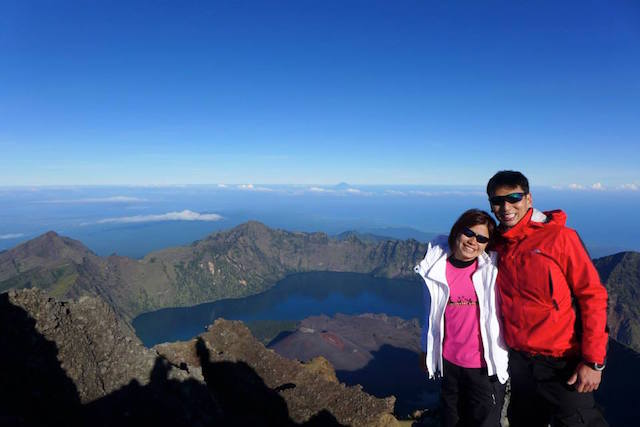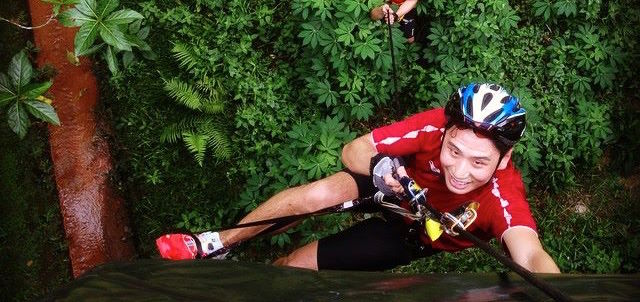The dreaded news arrives from your doctor to confirm your ACL is torn. Complete rupture. You feel the agony, one that is more excruciating than the instant you ‘popped’ your knee. You were told reconstruction is the only option if you intend to return to your beloved sport.
Sounds familiar? If you have recently been in that unenviable position, you are not alone. Many have gone through it. I personally have – twice. Once for each knee. Hence I’m writing this to share my journey towards full recovery and how I didn’t let them stop me from my adventures.
The Surgery
Ideally, you should seek treatment from a Sports Orthopaedic Specialist, and not just any Orthopaedic Specialists.
My doctors assured confidently that they were rather routine procedures, barring any infections. Both times, I remember sleeping soundly through. I only regained my consciousness when I felt immense pain on the knee. The anaesthetics had worn off. At this point, I was already in my hospital ward, with my knee nicely wrapped in layers of bandage. I went through several scans in the coming days to rule out any infections. The surgery was successful. But it was hardly half the battle won. The upcoming months would decide my recovery. The orthopaedic surgeon had done his job. Now it was my turn to do mine, diligently.
![Compression stockings [Left knee - Mar 2012]](https://ladyexplorer.com/wp-content/uploads/2015/05/swollen-knee-med.jpg)
Pain Management
For both my knees, the most intense pain I felt was actually on Day 1. It then gradually subsided as the days went by. So did the swelling. Painkillers and cold compress helped a great deal. So don’t stop icing it.
Increasing Range of Motion (ROM)
The single most important thing to remember post-sugery. Knees – unlike other stationery parts like the shins or thighs – are like hinges. They are designed to move. Our body’s modus operandi, on the other hand, is to heal a wounded limb by multiplying cells to rebuild its tissues. The risk? New tissues could come in the way of the knee’s ‘hinge’, thus prohibiting its motion.
To ensure my knee did not stiffen up, I constantly remind myself to keep moving and stretching my knee, no matter how small the range of motion may be. This turned out to be a periodic interval activity of every two hourly, one that I performed anytime anywhere – when watching tv, reading a book, before bedtime and even at my office desk.
The evident progress was motivating. My knee’s range of motion gradually increased from 0 degrees in Day 1 to 90 degrees in Week 4. Subsequently, a full ROM was regained by Week 8.
I have personally heard horror stories of knees being totally immobilised. What’s the point of having reconstructed the ACL then? So remember – never stop stretching.
![Adjustable hinged guard prevents over-bending in the early phases of post-op, with the angle progressively increased [Right knee - July 2009]](https://ladyexplorer.com/wp-content/uploads/2015/05/rom-med.jpg)
Exercises and Strengthening
Once the swelling subsided, my quads were visibly flabby due to muscle wastage. I had to build up the quadriceps and hamstrings through a series of workouts. The initial stages were mainly body weight exercises like lunges and squats, which could be performed at home. Machines and dumbbells were incorporated in subsequent phases, during which I frequented the gym about 3-4 times a week.
The leg press machine helped to add bulk and strength to my quads. Leg curls worked my hamstring pretty well. Barbell squats were great for overall strengthening and balancing. My favourite? Stationery bikes. Not only were they great for strengthening and loosening the joints, I also got my cardio fix (Watch out! It’s pretty easy to gain weight during this period of reduced activity).
On non-gym days, I would stretch while I let my muscles recover from all the hard work. Sometimes, I would go for a swim – another great form of cardio exercise without putting too much strain on the knee. Just remember – only freestyle. Breaststroke is a big no-no because its motion would impact the operated knee immensely.
Physiotherapy
Your best friend during this critical rehabilitation phase is your physiotherapist. Choose this friend of yours wisely for his/her experience, judgement and recommendation would play a huge part in determining the speed of your recovery.
I had personally seen no less than ten different physiotherapists. In public and private hospitals. Singapore and Malaysia. Some I ditched quickly when I sensed incompetence or inaptitude. Some I never returned because he was preparing me, not for the rigours of sports, but for a sports commentator job (I should have known better since his other patients in the room were old folks with brand new Ironman knees). While others, I simply did not have the opportunity to stay longer with due to geographical constraints.
My advice is to stick with a good one throughout the entire rehab process. So quickly look for one who truly has your best interests at heart. Do not hesitate to seek recommendations from friends who had made full recovery.
One very important point to note: Your physio helps to chart the exercises and routines based on your progress. Never make the mistake of doing your exercises and stretching only when you are in his clinic or under his/her watchful eyes. He/she is supposed to arm you with the skills and techniques. But the battle is yours to fight. I made sure I followed through with all the routines when at home/gym. To keep track of my progress, I kept a journal.
![Electrical muscle stimulation at the physio apparently helped with recovery [Left knee - May 2012]](https://ladyexplorer.com/wp-content/uploads/2015/05/electrical-muscle-stimulation-med.jpg)
Nutrition
In the rehabilitation phase, your knee needs plenty of nutrients to rebuild the damaged cells and tissues. Plus, all your workouts and exercise would count for nothing if you do not eat well. As the saying goes, six-pack abs are built in the kitchen, not the gym. Same goes for your quadriceps and hamstrings.
I made a conscious effort to include more fish, chicken, eggs, soy and milk into my diet. I do not take pork and beef but they are supposedly great sources of protein too. I relied quite a bit on whey protein powder though. They are easy on the palate and absolutely convenient, especially when I’m on the go or in office.
Guards or No Guards
Are knee guards really required upon returning to sports? From my experience, they are pretty useless. Worse still, they give wearers a false sense of security. After my first surgery, I was personally guilty of returning to sports too soon, assuming a knee guard is a sufficient support for my still-recovering knee. The result – serious swelling after every session.
A better long-term solution is to strengthen the group of muscles around the knee with routine weighted exercises. This would probably mean more gym sessions and a longer period on the sidelines. It will be worth it. Stronger muscles mean a lower risk of arthritis come old age.
![Not a great idea to go full-on competitive with a knee guard [Right knee - 2009]](https://ladyexplorer.com/wp-content/uploads/2015/05/football.jpg)
[Right knee – 2009]



Disclaimer: I am not a medical doctor, registered nurse, or a physiotherapist. The information I provide is based on my personal experience. Any recommendations I make about exercise, nutrition or lifestyle should be discussed between you and your doctor and/or physiotherapist.
This article is not written to and does not provide medical advice, professional diagnosis, opinion, treatment or services to you or to any other individual. The information provided in this article is not a substitute for medical or professional care and advice, and you should not use the information in place of a visit, call consultation or the advice of your doctor or physiotherapist. The writer is not liable or responsible for any advice, course of treatment or diagnosis you obtain from this article.

3 replies on “Why a Torn ACL Shouldn’t Stop Your Adventures”
[…] P.S. My MRI scan results back home revealed a ruptured MCL and partial ACL / meniscus tear, but I’m gonna take heart that a full recovery is just a matter of time and in my own control. Because Why Should a Torn ACL Stop Your Adventures? […]
[…] Recovering from a knee surgery too? Read about KT’s rehab process here: Why a Torn ACL Shouldn’t Stop Your Adventures […]
[…] Recovering from a knee surgery too? Read about KT’s rehab process here: Why a Torn ACL Shouldn’t Stop Your Adventures […]